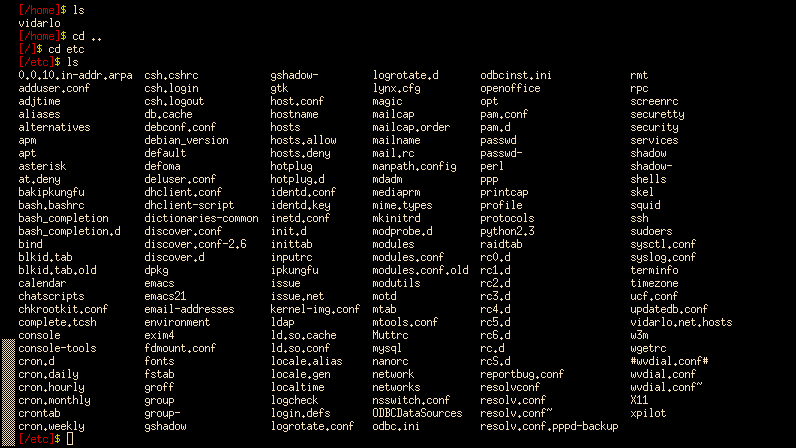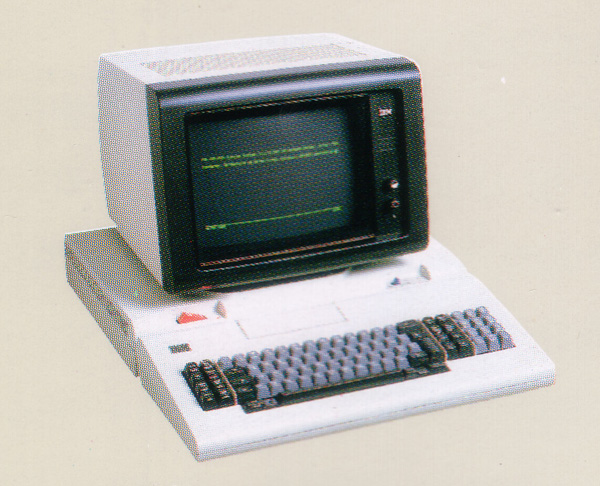|
Shareware
Shareware is a type of proprietary software that is initially shared by the owner for trial use at little or no cost. Often the software has limited functionality or incomplete documentation until the user sends payment to the software developer. Shareware is often offered as a download from a website. Shareware differs from freeware, which is fully-featured software distributed at no cost to the user but without source code being made available; and free and open-source software, in which the source code is freely available for anyone to inspect and alter. There are many types of shareware and, while they may not require an initial up-front payment, many are intended to generate revenue in one way or another. Some limit use to personal non- commercial purposes only, with purchase of a license required for use in a business enterprise. The software itself may be time-limited, or it may remind the user that payment would be appreciated. Types of shareware Trialware Trialware ... [...More Info...] [...Related Items...] OR: [Wikipedia] [Google] [Baidu] |
Andrew Fluegelman
Andrew Cardozo Fluegelman (November 27, 1943 – July 6, 1985) was a publisher, photographer, programmer and attorney best known as a pioneer of what is now known as the shareware business model for software marketing. He was also the founding editor of both ''PC World'' and '' Macworld'' and the leader of the 1970s '' New Games'' movement, which advocated the development of noncompetitive games. Early life Fluegelman was raised in White Plains, New York.Rodgers, Michael (October 20, 1985).The Mysterious Death of a Man Who Loved Life. ''Image''. The San Francisco Examiner. p. 19. He graduated from Yale University in 1969. Career Attorney Following graduation, Fluegelman worked in Midtown Manhattan before moving to California and working for a law firm in San Francisco. He was admitted to the State Bar of California in January 1971. He resigned in 1972 without any particular plan about his future. Writing The following year, Fluegelman started working for the Whole Earth Catal ... [...More Info...] [...Related Items...] OR: [Wikipedia] [Google] [Baidu] |
Copy Protection
Copy protection, also known as content protection, copy prevention and copy restriction, is any measure to enforce copyright by preventing the reproduction of software, films, music, and other media. Copy protection is most commonly found on videotapes, DVDs, Blu-ray discs, HD-DVDs, computer software discs, video game discs and cartridges, audio CDs and some VCDs. It also may be incorporated into digitally distributed versions of media and software. Some methods of copy protection have also led to criticism because it caused inconvenience for paying consumers or secretly installed additional or unwanted software to detect copying activities on the consumer's computer. Making copy protection effective while protecting consumer rights remains a problem with media publication. Terminology Media corporations have always used the term copy protection, but critics argue that the term tends to sway the public into identifying with the publishers, who favor restriction technolog ... [...More Info...] [...Related Items...] OR: [Wikipedia] [Google] [Baidu] |
Freeware
Freeware is software, often proprietary, that is distributed at no monetary cost to the end user. There is no agreed-upon set of rights, license, or EULA that defines ''freeware'' unambiguously; every publisher defines its own rules for the freeware it offers. For instance, modification, redistribution by third parties, and reverse engineering are permitted by some publishers but prohibited by others. Unlike with free and open-source software, which are also often distributed free of charge, the source code for freeware is typically not made available. Freeware may be intended to benefit its producer by, for example, encouraging sales of a more capable version, as in the freemium and shareware business models. History The term ''freeware'' was coined in 1982 by Andrew Fluegelman, who wanted to sell PC-Talk, the communications application he had created, outside of commercial distribution channels. Fluegelman distributed the program via the same process as ''shareware''. As s ... [...More Info...] [...Related Items...] OR: [Wikipedia] [Google] [Baidu] |
CompuServe
CompuServe, Inc. (CompuServe Information Service, Inc., also known by its initialism CIS or later CSi) was an American Internet company that provided the first major commercial online service provider, online service. It opened in 1969 as a timesharing and Terminal emulation, remote access service marketed to corporations. After a successful 1979 venture selling otherwise under-utilized after-hours time to Radio Shack customers, the system was opened to the public, roughly the same time as The Source (online service), The Source. H&R Block bought the company in 1980 and began to advertise the service aggressively. CompuServe dominated the industry during the 1980s, buying their competitor The Source. One popular use of CompuServe during the 1980s was file exchange, particularly pictures. In 1985, it hosted one of the earliest online comics, ''Witches and Stitches''. CompuServe introduced a simple black-and-white image format known as RLE (run-length encoding) to standardize the im ... [...More Info...] [...Related Items...] OR: [Wikipedia] [Google] [Baidu] |
Communication Software
Communication software is used to provide remote access to systems and exchange files and messages in text, audio and/or video formats between different computers or User (computing), users. This includes terminal emulators, file transfer programs, chat and instant messaging programs, as well as similar functionality integrated within Multi-user dungeon, MUDs. The term is also applied to software operating a bulletin board system, but seldom to that operating a computer network or Stored Program Control exchange. History E-mail was introduced in the early 1960's as a way for multiple users of a time-sharing mainframe computer to communicate. Basic text chat functionality has existed on multi-user computer systems and bulletin board systems since the early 1970s. In the 1980s, a terminal emulator was a piece of software necessary to log into Mainframe computer, mainframes and thus access e-mail. Prior to the rise of the Internet, computer files were exchanged over dialup lines, req ... [...More Info...] [...Related Items...] OR: [Wikipedia] [Google] [Baidu] |
PC Magazine
''PC Magazine'' (shortened as ''PCMag'') is an American computer magazine published by Ziff Davis. A print edition was published from 1982 to January 2009. Publication of online editions started in late 1994 and continues . Overview ''PC Magazine'' provides reviews and previews of the latest hardware and software for the information technology professional. Other regular departments include columns by long-time editor-in-chief Michael J. Miller ("Forward Thinking"), Bill Machrone, and Jim Louderback, as well as: * "First Looks" (a collection of reviews of newly released products) * "Pipeline" (a collection of short articles and snippets on computer-industry developments) * "Solutions" (which includes various how-to articles) * "User-to-User" (a section in which the magazine's experts answer user-submitted questions) * "After Hours" (a section about various computer entertainment products; the designation "After Hours" is a legacy of the magazine's traditional orientation to ... [...More Info...] [...Related Items...] OR: [Wikipedia] [Google] [Baidu] |
Larry Magid
Larry Magid (born 1947) is an American journalist, technology columnist and commentator. He is the author of several books. Early life Lawrence J. Magid was born in 1947 in Brooklyn, NY. He grew up in Los Angeles, California. He received his BA from the University of California, Berkeley (1970) and a doctorate of education from the University of Massachusetts Amherst (1981). Career Magid is CEO of ConnectSafely.org and, for 20 years, served as the on-air technology analyst for CBS News He is also a frequent contributor to BBC, NPR and other broadcast outlets. In 1981 Magid was hired to secretly write the manual for the IBM PC version of EasyWriter, so he was among those aware of the computer's existence before its August 1981 debut. His technology columns and reviews appear regularly on CNET News.com, Forbes.com, Huffington Post and in the ''San Jose Mercury News''. Magid served the board of directors of the National Center for Missing and Exploited Children, and now serves on ... [...More Info...] [...Related Items...] OR: [Wikipedia] [Google] [Baidu] |
Terminal Emulator
A terminal emulator, or terminal application, is a computer program that emulates a video terminal within some other display architecture. Though typically synonymous with a shell or text terminal, the term ''terminal'' covers all remote terminals, including graphical interfaces. A terminal emulator inside a graphical user interface is often called a terminal window. A terminal window allows the user access to a text terminal and all its applications such as command-line interfaces (CLI) and text user interface (TUI) applications. These may be running either on the same machine or on a different one via telnet, ssh, dial-up, or over a direct serial connection. On Unix-like operating systems, it is common to have one or more terminal windows connected to the local machine. Terminals usually support a set of escape sequences for controlling color, cursor position, etc. Examples include the family of terminal control sequence standards that includes ECMA-48, ANSI X3.64, ... [...More Info...] [...Related Items...] OR: [Wikipedia] [Google] [Baidu] |
IBM 3101
The IBM 3101 ASCII Display Station, and IBM's subsequent products, the 3151/315X and 3161/316X, are display terminals with asynchronous serial communication (start-stop signaling) that were used with a variety of IBM and non-IBM computers during the 1980s–90s, especially the data processing terminals on non-IBM minicomputers, IBM Series/1 and IBM AIX computers. Models IBM 3101 The IBM 3101 ASCII Display Station appeared in 1979. It featured: * 12-inch green-phosphor Cathode ray tube, CRT display * 24 lines of 80 characters * Keyboard layout, ASCII Keyboard (US English, Belgian, Danish, Finnish, French, German, Italian, Japanese Katakana, Norwegian, Portuguese, Spanish, Swedish, Swiss French, Swiss German, UK English) * Asynchronous communication: EIA RS-232C interface for short distance; EIA RS-422 interface for longer distance * Baud, Baud rates of 200/300 to 19,200 (bps) Unusually for IBM's practices at the time, it also: * Utilized various non-IBM technologies * Required ... [...More Info...] [...Related Items...] OR: [Wikipedia] [Google] [Baidu] |
Videotex
Videotex (or interactive videotex) was one of the earliest implementations of an end-user information system. From the late 1970s to early 2010s, it was used to deliver information (usually pages of text) to a user in computer-like format, typically to be displayed on a television or a dumb terminal. In a strict definition, videotex is any system that provides interactive content and displays it on a video monitor such as a television, typically using modems to send data in both directions. A close relative is teletext, which sends data in one direction only, typically encoded in a television signal. All such systems are occasionally referred to as ''viewdata''. Unlike the modern Internet, traditional videotex services were highly centralized. Videotex in its broader definition can be used to refer to any such service, including teletext, the Internet, bulletin board systems, online service providers, and even the arrival/departure displays at an airport. This usage is no longe ... [...More Info...] [...Related Items...] OR: [Wikipedia] [Google] [Baidu] |


